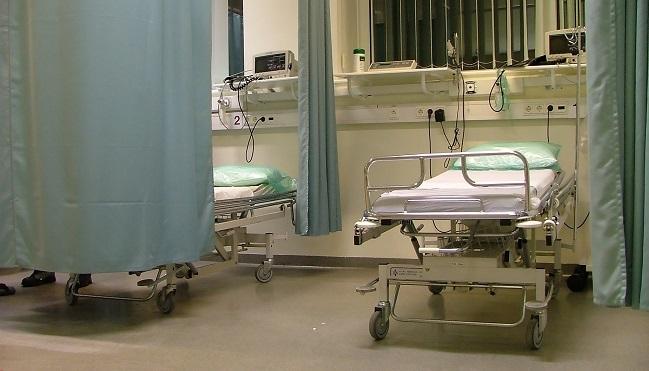Risk Scores Combined With Lower Troponin Cut Points May Help Refine Rule-Out Tests for Chest Pain
A new analysis gauging the “reclassification yield” of three different risk scores supports a role for clinical context alongside lab results.

Risk algorithms that incorporate troponin measured down to the lowest concentration can rule out ACS in the majority of patients presenting to emergency departments with chest pain, a new study affirms.
And while academic interest in recent years has focused on high-sensitivity troponins, research by Dustin Mark, MD (Kaiser Permanente Northern California, Oakland, CA), and colleagues, which looked at three different high-specificity risk scores—the modified HEART and original and simplified versions of EDACS—suggests that even conventional troponin assays are useful if test results are measured down to the lowest limit of quantification.
“Our key findings were that both scores accurately predicted a very low risk of major cardiac events at 60 days amongst the majority of the population we studied, and that prediction was enhanced and improved with the use [of a] lower range of normal troponin reporting [than is] usually used,” Mark told TCTMD. “This is conceptually similar to using a highly sensitive troponin assay in that the assays are more precise and have lower cutoffs.”
Chest Pain Poses Discomfort
The retrospective study, which was published online in the Journal of the American College of Cardiology, included 118,822 patients who presented to the hospital with possible ACS and were evaluated using the modified HEART, original EDACS, or simplified EDACS risk scores. All three scores were “optimized” by using a lower limit of cardiac troponin I (< 0.02 ng/mL instead of < 0.04 ng/mL) and were checked against patients’ MACE rates during the subsequent 60 days.
Accuracy of the three tests was defined according to a “reclassification yield” based on the net increase in true positives divided by the net increase in both true and false positives, a number that offers an estimate of the event rate among all patients reclassified as “non-low risk.” In the study, all three tests had reclassification yields ranging from 3.4 to 3.9, while also offering similar negative predictive values hovering near 99.5%. The original EDACS score correctly singled out the largest proportion of patients who had a low risk of major adverse cardiac events within the 60-day window (60.6% of patients).
An important takeaway from the paper is that a lower threshold of cardiac troponin I may make sense for ruling out ACS than would be needed to “rule in” the diagnosis, the authors say.
“Even for near-horizon events, studies examining the predictive value of high-sensitivity cardiac troponin in practice have shown that thresholds well below the 99th percentile and/or a lack of very small changes in cTn on serial testing offer improved negative predictive value for 30-day MACE over use of the 99th percentile,” Mark et al write.
Combining the risk algorithms with a lower cut point “actually brought you down to a risk level that was acceptable to clinicians, based on surveys, and cost-effective based on cost-efficacy analyses, and likely warranted no further testing, which was a leap that has been talked about, but not really firmly rooted in evidence,” Mark elaborated to TCTMD. “Now we’re looking at 50% to 60% of [our] population having a low enough risk that no further testing is warranted. Specifically to that point, the EDACS had a larger proportion of patients that fell in that category than did the HEART, so it would appear to be more specific without a loss of sensitivity.”
In an accompanying editorial James L. Januzzi Jr, MD, and Cian P. McCarthy, MBBCh (Massachusetts General Hospital, Boston), point out that an estimated $5 billion is spent testing and triaging the nearly seven million patients who present to emergency rooms with chest pain each year. Mark et al’s study, they say, supports the need for “clinical contextualization” of laboratory results when troponin tests, even high-sensitivity tests, deliver ambiguous results.
“With rising costs and increasing pressure to reduce hospitalizations, a clear tension is present; on the one hand, we cannot admit every patient to evaluate chest discomfort, but on the other hand, missing a high-risk cardiac diagnosis is not acceptable,” they write. “With several available clinical risk scores with significant ability to exclude MI while simultaneously identifying substantial numbers of lower-risk patients suitable for early discharge, we may finally have a suitable gatekeeper to assist the pressurized decision-making that occurs in the ED setting.”
A separate issue is why risk scores such as these, even when validated, are not more widely used. For one, says Mark, retrospective studies like this need to be validated in prospective trials. He himself is a principal investigator for STEWARD, a prospective, 15,000-patient study getting underway now.
Another issue is actually convincing physicians and others on the healthcare team to take the time to plug results of component tests into risk algorithms.
“Integration into the electronic health record is very useful to drive people to get this information at the decision points of clinical care,” Mark acknowledged. “That’s probably one of the main barriers—interruption to the workflow to figure out what [patient] scores are. So that’s part of [the STEWARD] study design: to bring all of those calculations easily to the clinician.”
Shelley Wood was the Editor-in-Chief of TCTMD and the Editorial Director at the Cardiovascular Research Foundation (CRF) from October 2015…
Read Full BioSources
Mark DG, Huang J, Chettipally U, et al. Performance of coronary risk scores among patients with chest pain in the emergency department. J Am Coll Cardiol. 2018;71:606-16.
Januzzi JL Jr, McCarthy CP. Evaluating chest pain in the emergency department: searching for the optimal gatekeeper. J Am Coll Cardiol. 2018; 71:617-619.
Disclosures
- Mark reports no relevant conflicts of interest.


Comments